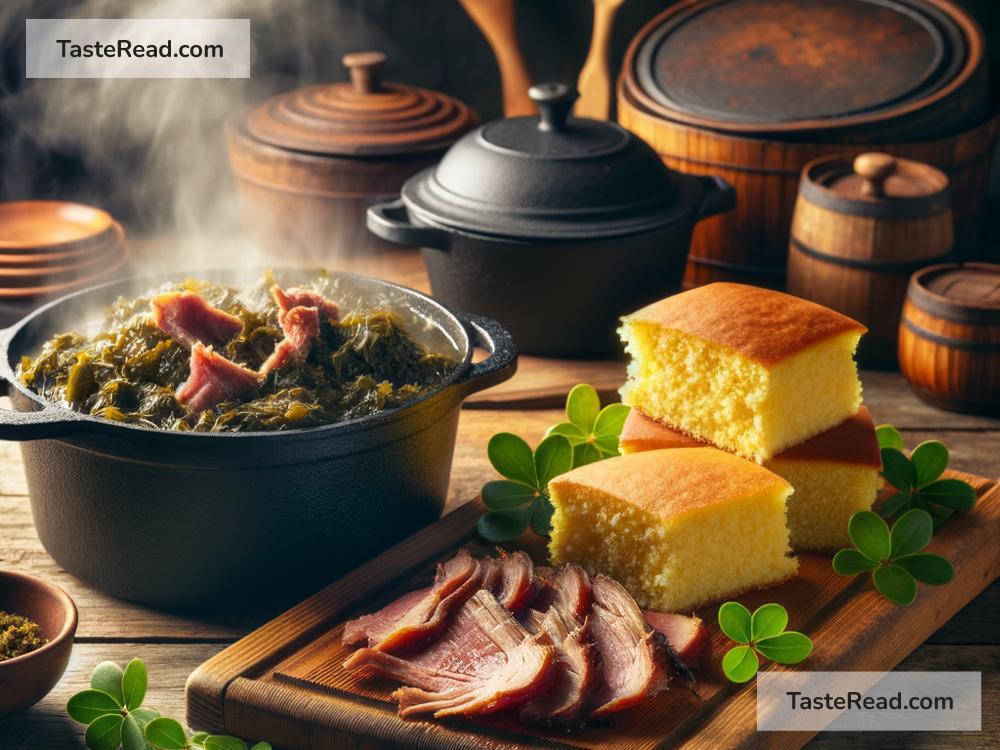The Surprising Link Between Mustard Greens and Southern U.S. Cooking
When people think about southern cooking, their minds often wander to comfort food: fried chicken, cornbread, biscuits, and sweet potato pie. But one staple of southern cuisine often goes unnoticed, even though it plays a big role in defining the region’s flavors. We’re talking about mustard greens—a humble leafy vegetable with a surprising story.
At first glance, mustard greens might seem like just another type of leafy green, similar to spinach or kale. But in the southern United States, they hold a special place in kitchens and culture. Let’s explore the fascinating connection between this leafy green and the delicious traditions of southern cooking.
What Are Mustard Greens?
Mustard greens come from the mustard plant, a member of the Brassica family, which also includes cabbage, broccoli, and kale. The leaves are bright green and have a slightly peppery, tangy flavor. When cooked, they tend to have a deep, earthy taste with a bit of a spicy kick.
You’ll find mustard greens in grocery stores and farmers’ markets, but they’ve long been grown in home gardens across the United States, especially in the South. This vegetable is robust, fast-growing, and perfect for southern climates.
African Roots of Mustard Greens
The use of greens in southern cooking has deep roots in African food traditions. When enslaved Africans were brought to the United States, they carried with them culinary practices from their homelands, including the use of leafy greens in meals. In West Africa, greens like collards and spinach were cooked with spices and served as a vital part of daily eating.
While mustard greens weren’t native to Africa, they became a substitute for other green vegetables once enslaved people arrived in the U.S. Mustard greens were easy to grow in the warm southern climate, making them a reliable choice for cooking. Today, dishes featuring mustard greens honor a legacy of resilience and creativity, passed down across generations.
Greens in the “Soul Food” Tradition
Soul food is the term used to describe the beloved dishes created and perfected by Black communities in the southern U.S. during and after slavery. Mustard greens are an important part of this cooking tradition. Like collard greens and turnip greens, mustard greens are often simmered for hours in a rich broth known as “potlikker.” This broth is typically flavored with smoked meat, such as ham hocks or bacon, along with garlic, onions, and a dash of vinegar.
Cooking greens low and slow in potlikker softens them and brings out their full flavor. At the same time, this method preserves the nutrients packed into the leaves. The potlikker itself is considered a treasure—it’s loaded with vitamins and is often enjoyed as a soup or sopped up with cornbread.
For families in the South, cooking greens is more than just a way to prepare food. It’s a bonding experience and a connection to heritage. Many people remember learning how to clean, chop, and cook mustard greens in their grandmother’s kitchen, surrounded by laughter and stories.
Mustard Greens in Southern Gardening
Southern cooking isn’t just about the dishes—it’s also about the ingredients, many of which come straight from backyard gardens. Mustard greens are incredibly popular in southern gardens, thanks to their ability to thrive in cooler months. They can grow quickly and handle early frosts, making them a go-to crop during fall and winter.
Because mustard greens are so easy to cultivate, they’ve long been a symbol of resourcefulness in southern households. Even if money was tight, families could rely on their garden for fresh greens, adding nutrition and flavor to meals without breaking the bank.
Health Benefits of Mustard Greens
Southern food is often thought of as rich and indulgent, but mustard greens are proof that healthy eating is part of the tradition as well. These greens are packed with vitamins A, C, and K, as well as minerals like calcium and iron. They’re also high in antioxidants, which can help reduce inflammation and promote overall health.
That peppery flavor you taste when eating mustard greens comes from compounds called glucosinolates. These compounds are believed to have cancer-fighting properties, making mustard greens a nutritious addition to any plate.
Mustard Greens Today
Although mustard greens have a long history in southern cooking, they’re gaining popularity nationwide. More people are looking for affordable, nutrient-dense vegetables to add to their diets, and mustard greens fit the bill. Farmers’ markets and trendy restaurants are bringing greens back into the spotlight, often highlighting their bold flavor and versatility.
In southern kitchens, however, mustard greens never really went out of style. Whether cooked in potlikker, sautéed with garlic, or even thrown into a soup or stew, they remain a beloved ingredient that connects people to their roots.
Conclusion
The story of mustard greens in southern cooking is more than just a tale of food—it’s a reminder of history, resilience, and culture. This leafy green may appear simple, but it carries the weight of generations of love, tradition, and ingenuity. From the gardens of the South to the tables of soul food lovers everywhere, mustard greens are a flavorful symbol of community and connection.
So the next time you sit down to enjoy a plate of greens, take a moment to appreciate their rich history. They’re more than just a vegetable—they’re a taste of southern heritage, served with a side of family and pride.


